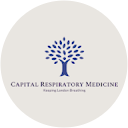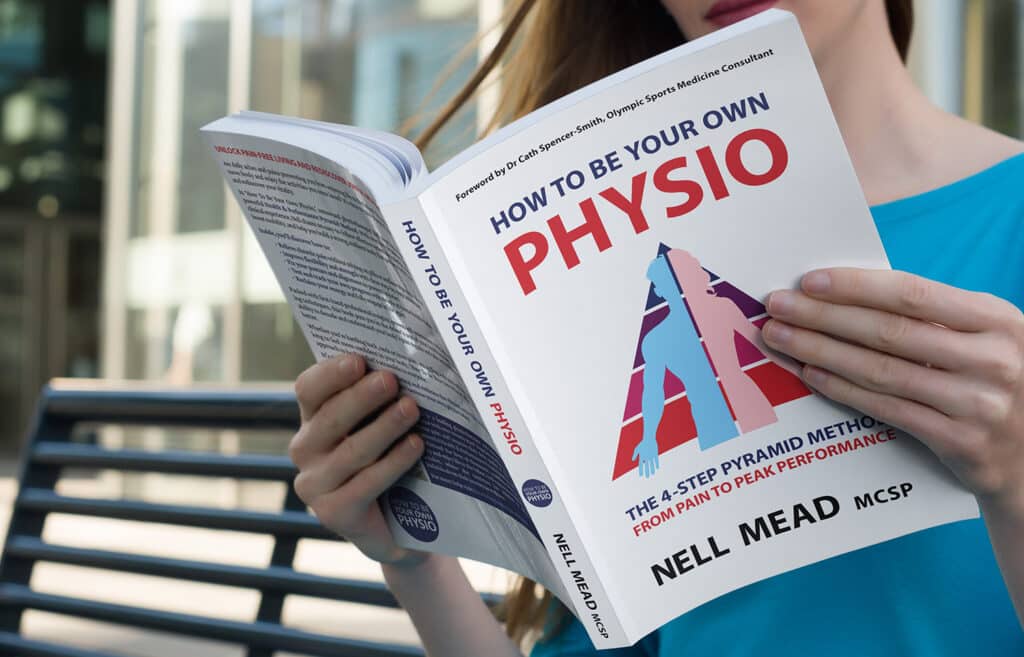Our patients often come to see us with long term problems, caused by things like posture or bad movement patterns – but we also see patients who’ve experienced sudden, traumatic injuries. Nell and Helen recently gave a case presentation alongside surgeons from London Sports Orthopaedics about our trauma patient Richard, who was involved in a car accident in summer 2014. We’re grateful for Richard’s permission to put his story together, and for his help in writing this case study in order to help other people who may be in a similar situation. At the end of this post are contact details for the members of “Team Rich” who have contributed in their various ways to put him back together…
In 2014, Richard was a 34 year old public sector project manager. He was fit and active, and enjoyed running and swimming. He loved travelling, and had visited Cornwall most August bank holidays for the previous ten years.
At 7.15am on Friday 22nd August 2014, Richard set off with his new girlfriend, bound for Devon and Cornwall.
He never made it.
Richard says: “On the A361, around 25 miles from Clovelly, the first stopover, a surfboard suddenly and without warning jettisoned from the top of the vehicle in front, pitched on the road surface and came through my windscreen. I remember little from this point with the exception of a pulling at my body as my clothes were cut from me by paramedics and being reassured I would be out soon as the fire service freed my legs and cut my trapped right foot from the wreckage of my car.
I’d been involved in a head on collision and had sustained multiple serious injuries. I was treated at the scene before being airlifted under a large dose of ketamine by the Devon Air Ambulance to Derriford Hospital in Plymouth, the Major Trauma Centre for the South West’.
Richard had sustained serious complex trauma, and while he was conscious throughout the ordeal, fortunately he doesn’t remember much.
His major injuries included:
1. A left-sided forehead laceration
2. A left orbital fracture
3. A right eye corneal laceration
4. A left shoulder fracture
5. An open left both bone forearm fracture
6. An L4 lumbar vertebra fracture
7. Left open comminuted patella fracture
8. Left fibula fracture
9. Lacerations over the left pretibial region and left medial ankle
10. An open right distal tibial pilon fracture, talus fracture, calcaneal and metatarsal fractures
In Derriford, he received limb-saving surgery to his right ankle and left arm, and his patella was wired together.
Richard says: “From the moment I understood where I was and what had happened, I was determined to get up and out of hospital, and begin getting my life back on track as quickly as possible. On 10th October 2014 after 7 weeks spent across two hospitals in ICU and high-dependency orthopaedics and plastics wards I was discharged.
” I was now an outpatient for orthopaedics, plastics and ophthalmics. I left for home with the assurance physiotherapy would be in touch within a couple of weeks and I’d continue the work started on the ward.”
It didn’t quite work out like that…
The physiotherapy that Richard was provided with was limited. He was eager to work hard in order to get back to his pre-accident state; but after only two physio sessions he was put into a weekly, drop-in, group rehab session.
Between sessions, the physios would forget his limitations and suggest exercises that he wasn’t able to do. He was following his programme alongside people rehabilitating from routine surgery – ACL, hip and knee replacements.
Although Richard practised his programme hard in the gym, as well as attending his rehab sessions, he quickly realised he needed more specialist attention to help him improve. Instead, after 12 drop-in sessions, he was discharged.
Just as bad, his orthopaedic outpatient appointments were uncomfortable with long waits. He saw multiple consultants and had little time to fully discuss the options available to him for future treatment. The wires in his patella were digging uncomfortably into the joint and the skin, his arm was failing to heal and a request for funding for Exogen was dismissed (Rich later paid for 5 months of twice-daily Exogen treatment himself, resulting in his radius finally uniting). His ankle was now arthritic and the pain debilitating.
Richard again: “My body was unfamiliar and daily living was challenging. A return to my pre-accident life felt beyond me. I was also experiencing and being treated for psychological difficulties, something I’d tried to ignore as I strove to get fit in body, thinking the mind would follow.
“The positive attitude I’d been sustaining was weakening as I struggled to adjust to a new reality. I knew I needed more support for my physical recovery than I was getting as an NHS outpatient.”
But Richard’s luck was about to turn.
Derriford Hospital has an affiliation with the military; and some of Rich’s nurses had seen active service. In particular, his leg injury was similar to those they had seen in conflict zones. After discussion with these nurses, and aware that he was struggling, Richard’s father contacted Headley Court, the Defence Medical Rehabilitation Centre, in June 2015, to ask if they would be prepared to treat him.
While Headley Court is only allowed to treat serving and recently-discharged military personnel, its staff are a dedicated and compassionate bunch. My former colleagues Lt Col Stacy McQueeney and WO2 Max Martin provided Richard with advice regarding organisations that would be able to assist him in taking my recovery forward. He had a catastrophic injury lawyer on board as well as a rehabilitation case manager; and on Lt Col McQueeney’s recommendation, Richard worked with both to get the nod to visit me at my clinic.
Rich says: “I credit this and meeting Nell as a key point in my recovery. Nell understood my injuries, the impact these were having on my body and what we needed to do together to improve my immediate situation and longer-term outcomes.
“I was given specialist treatment during sessions, taken through specific exercises and given these to do between our sessions.
“I was advised to see surgeons specialising in the specific areas where my injuries were. Combined with my osteopath and personal trainer, these people became ‘Team Rich’. Nell coordinated communication between the team and an action plan for my future treatment was agreed.”
It was clear to me that Rich’s ankle injury was the most complex injury that needed addressing, but that he was also going to need further surgery to his left knee and arm. So, after a few sessions to work out how his body reacted to physiotherapy, I took him off to see consultant foot & ankle surgeon Mr Amit Amin at London Sports Orthopaedics, and between the three of us, we came up with a plan.
- Firstly, we needed to get some immediate relief for Rich’s ankle pain, so his excellent podiatrist, Emma Supple, was asked to fit some bespoke footwear with orthotics to address his increasing ankle equinus. Amit also injected Rich’s ankle with local anaesthetic and steroid to give him temporary relief.
- Once this had taken effect, top knee consultant Mr Ian McDermott was able to operate on Rich’s left knee, removing the wires that were causing him such discomfort. Rich wasn’t able to use an elbow crutch with his left arm, because of the ulna which wasn’t uniting; but we felt he should be able to manage a gutter crutch in the short term.
- Once the left knee had settled, it would be time for upper limb consultant Mr Livio di Mascio to repair Rich’s left arm – the plates which had been inserted at Derriford having come loose, and the ulna having not united. Livio also took a bone graft from Rich’s pelvis.
- Finally, we agreed that once Rich was able to bear weight through his left arm comfortably, and at the point when his right ankle became unbearable, he would go back to Amit for an ankle fusion.
Rich’s recovery isn’t all about the surgery though – because, as I explain to all my patients, the necessary ingredients for surgical success are a good surgeon, a good patient, and a good physio/rehab team. Between us, Rich and I managed to coordinate Team Rich, who, at varying times, included his osteopath (Savash), his personal trainer (Marco), his case manager (Angeline), the surgical team (Amit, Ian and Livio as orthopaedic surgeons, plus Mark Phillips who coordinates the complex trauma service at London Sports Orthopaedics, and plastic surgeon Victoria Rose who helped Amit manage Rich’s soft tissue trauma – he had a gracilis flap over the area where Amit was going to go in and operate, and Amit needed to know where Rich’s major blood vessels were, so that he could avoid them) – plus the therapists in my former clinic (Helen, who was then my head of rehab, played a major role in his recovery). Everyone pulled together and worked hard to help Rich make the best possible recovery.
It’s now nearly 3 years since Richard’s accident, and nearly two years since he came to me. All the planned surgery is now complete (the ankle fusion became necessary and was carried out in February 2017) and Rich is now learning to walk with a fixed angle at his ankle. He’s worked incredibly hard, and has achieved an unusually good outcome as a result. We are aware that he may well need further surgery in the future (when one joint is fused, it places extra stress on the surrounding joints) but for the moment, Rich is able to focus on getting his life back. He’s back to work full time, planning to take part in an open water swim; and has raised thousands of pounds for the Air Ambulance Service who rescued him from the road.
Messages from Rich about the difference between the NHS and the private sector, for complex trauma patients
Trauma is a great leveller. Irrespective of who you are you and what you have, you are in the hands of the emergency services and the NHS. The NHS has incredible emergency trauma care, subsequent urgent complex surgery and high dependency care. The quality of care I was given on my right foot and ankle has been independently reviewed as exceptional and prevented a below the knee amputation. However, my experience on discharge is different and at this point you have choices. I believe that private practice is essential to fill gaps in the NHS care of polytrauma patients.
I saw a vast disconnect between the excellent initial care I received and my outpatient care, particularly in the area of physiotherapy. NHS physio aims to get you functional, it does not seek to get you back to pre-trauma abilities. You will not achieve your best possible outcome, and therefore best long-term quality of life, without good quality, tailored physiotherapy and rehabilitation coupled with hard work, patience and dedication.
Private practice enables better planning, vitally important for you and your support network when recovering from multiple trauma. It also provides consistency of consultants and the ability to discuss treatment options, timeframes and build trust. It allows you to focus all your energy on healing and recovery, because managing your recovery will become a full-time job, and minimizing stress and anxiety is vital.
Injury compensation should be used to fund recovery. If you are assigned a case manager to manage your immediate needs, you need to work collaboratively and be bold and tenacious in your requests for support from private practice. Nothing is more important that getting back to the best you can be.
Attitude, positivity and support networks are as important to your outcome as the quality of the treatment received.
My four top tips for physios who want to manage complex trauma in the private sector
Put your ego down and ask. I think I’m a pretty good physio, I work hard, I listen to my patients, and I’m obsessive about doing the best job I can. But the biggest thing for me is putting the patient first, and that sometimes means asking for advice. I had a team of therapists at the clinic, and a network of physios, osteos, physicians, and surgeons, whom I consult all the time on specific issues. That way I get to tap into lots of people’s experience and it saves me making unnecessary mistakes.
Build and use your network. This is one area in which I think private practitioners have a massive advantage over practitioners who work in the public sector, whether that’s NHS or Army. When I worked in the public sector, I couldn’t just go and observe consultants in clinic or theatre, because I had upwards of 15 patients to see per day, and if I didn’t see them, they weren’t going to get seen. But now, I choose how I spend my time, and I choose to do regular networking so that I can work out exactly who I want to send my patients to. The big London orthopaedic practices hold regular training evenings which I attend. I invited consultants to the clinic fairly regularly for chats, demonstrations and to meet the team; I go into their clinics and into theatre, and I meet them for drinks and coffee. I do this because the more I know, the more I can explain to my patients, which gives them confidence, and when patients have confidence in their team, they relax and they get better results.
Build a team that can work together. I approached London Sports Orthopaedics to work with Rich for several reasons. From a personal perspective, I knew the consultants I wanted to work with Rich, I liked them, knew I could work with them, and knew they were clinically top-notch (because I go to watch them all in theatre and clinic – I’m really protective of my patients and won’t send them to anyone I wouldn’t want operating on me if I needed it). I know they work with their patients, and treat them with respect rather than patronising them. And from a pragmatic perspective, they had what I needed – I knew they had excellent knee, foot and ankle and upper limb surgeons on board, and that I’d be able to get Rich into theatre as soon as he was ready.
And finally, the biggest one: communicate. When I was writing this post, I looked back at my Rich file to see how many emails there’d been. The answer was well over 100, and given the size of Team Rich, it’s not hard to see why. I think the teamwork and communication has been a major factor in the quality and speed of Rich’s recovery so far, and where I also think we have a massive advantage in private practice is that we can spend the time to really look after people and plan ahead according to the patient’s recovery times rather than the consultants’ waiting lists. I was also able to get along to a lot of Rich’s appointments at LSO and observed the final operation, and again, I think that’s been a big help to Rich, both in terms of the quality and nature of the physio I could provide him, and in terms of his psychological recovery. He knows we’ve got his back.
Resources
Hopefully you will never be in the sort of situation Rich was in! But should it ever happen to you or anyone you know, the people who helped Rich are:
- Surgeons: London Sports Orthopaedics and their new trauma service (click the red “Emergency Referral” button on their website) – 0207 496 3597
- Case manager: Angeline Jha at Bush & Co Rehabilitation – 01327 876210
- Osteopath: Savash Mustafa at Kinetic Osteopathy – 0208 920 6828
- Personal trainer: Marco Sabino – marco_sabs@hotmail.com
- Injury lawyer: Warren Collins at Penningtons Manches LLP – 020 7457 3000
- Podiatrist: Emma Supple at Supplefeet – 020 8367 9292
- Physio & rehab: Nell Mead and Helen Murawska at nellmead.com – 0207 175 0150







